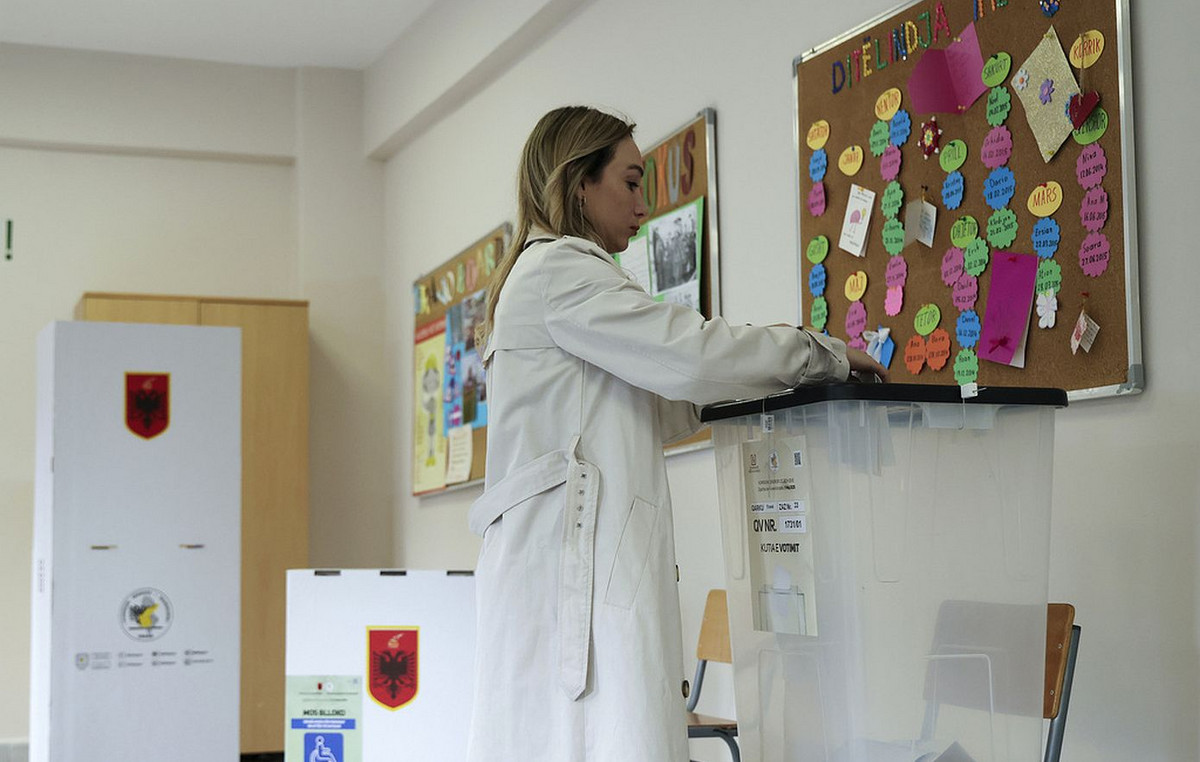There are ten episodes that are not easy to watch. In anthology form, “It was not my fault” narrates situations of physical, verbal and sexual violence against Brazilian women. Each episode brings a different story, with characters, motivations and endings that, just like in real life, are not encouraging at all. A single link unites these stories: the Carnival Brazilian, more precisely a street block.
“The series is an international project, with Colombian and Mexican versions, so we needed something that represented Brazil,” he says. Juliana Rosenthal , production scriptwriter. “Carnival is a democratic event, as well as violence against women”.
Susanna Lira , the series’ director, agrees. For her, it is a symbol of tolerance, but there are many crimes and harassment that take place in this same environment.
“It is interesting to bring a Carnival block because different social classes participate in it”, he says. “In a certain episode, we take a walk with the camera showing from the seller of the block to the singer. All suffered violence, none of them is saved. It’s something very realistic and Brazilian.”
The stories brought are freely based on real events and were built together. According to Juliana, there was a lot of conversation between the cast and production. And the actresses themselves confirm this: Aline Dias says that she built her character based on stories she heard from her colleagues.
“I know that violence always happens when you are very vulnerable, in a situation you don’t expect, with people you don’t expect”, says the actress.
In the episode in which she plays the protagonist, Aline plays Ingrid, a young woman who, born in Piauí, moves to São Paulo after getting a job at one of the largest construction companies in the country. She ends up being the victim of collective violence from co-workers.
“We are never armed when this happens. I’m sure I’ve experienced violence like that without knowing I was experiencing it.”
https://www.youtube.com/watch?v=MR5BN3VZDpU
Who brought his own experience to the character he played was Fernanda Nobre which makes an aspiring actress trapped in an abusive relationship.
“There were many triggers for me”, says Fernanda. “In one of the scenes, I was very emotional and when I went to the dressing room, I started to think: ‘Have I experienced this? Why was I so excited?’ Later, I understood that it was the fear of experiencing an aggression like that.”
The biggest victims in real life are women, but, according to the series director herself, it was men who needed more support.
“I was surprised by the vulnerability of men,” says Susanna, the series’ director. “Women were willing to denounce, to tell their stories, but men felt intimidated by reproducing a behavior that they themselves deny.”
The actor Daniel Blanco , partner of Fernanda Nobre, commented on this fragility. For him, any man is liable to be violent, no matter how romantic, affectionate and passionate he appears to be towards his partner or her family.
“I remember a scene that shook me a lot and it was Fernanda, the strongest of the duo, who lifted my spirits, saying ‘let’s work’”, recalls the actor.
Faced with such heavy and realistic stories, psychological support for the entire team was fundamental. Writers, director and cast confirm that support took place on and off set.
Script readings were done online, more quietly, during the most complicated phase of the pandemic, however, as soon as the cast began to perform the acting dynamics, emotion took over each film.
“I thought, ‘I’ll never need this therapist’ until, after an episode, I made an appointment and she said, ‘Wow, 20 people booked a session with me today,” Susanna Lira says.
Dramaturgy and violence

Such a strong connection with the credible makes “It Was Not My Fault” a series that ends up being more an object of reflection than purely entertainment. The script is well tied, the performances are good and the photography is beautiful, but it is not a production to watch before bed, in order to clear the mind. The creators and the cast want to make us think.
Amidst the flood of streaming productions that tell real stories of femicide in a documentary way, “It Wasn’t My Fault” should reach the audience in another way.
“It’s one thing to see a newspaper article, the story of a woman whose name you don’t know”, says Susanna Lira. “It’s another thing to work with a script like this, which brings all the immensity that we lose with the death of a woman.”
Juliana Rosenthal, screenwriter, completes the reasoning, saying that the project tries to clarify the questions we have when reading a news item, for example: “How was this woman killed? Who did she love? How did that happen?”.
Actress Fernanda Nobre believes in the power of dramaturgy as an identification of the spectator.
“Journalism has the function of denunciation, a very important function of helping a society to organize itself, but art makes the individual organize himself based on that, seeing himself on the screen and thinking about his own situation”.
Cast and production hope the series will serve as female empowerment and big little touches for all men watching “It Wasn’t My Fault.”
For Daniel Blanco, many friends and colleagues feel attacked when he exposes a sexist situation to them, and he hopes the series will be a starting point for further reflection.
“Unfortunately, I don’t think men will join in watching ‘It Wasn’t My Fault’ to learn about machismo and how to improve relationships with women,” he says. “However, if one of them is at home and puts on a series to watch, he may be surprised by acts that he himself will identify with, with no one on the side pointing the finger.”
Source: CNN Brasil
With 6 years of experience, I bring to the table captivating and informative writing in the world news category. My expertise covers a range of industries, including tourism, technology, forex and stocks. From brief social media posts to in-depth articles, I am dedicated to creating compelling content for various platforms.







